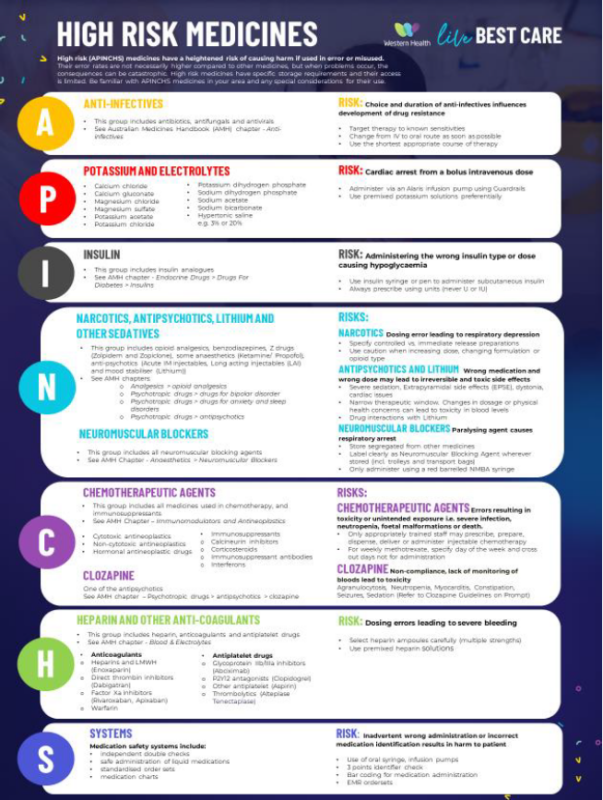
High risk (APINCH) medicines have a heightened risk of causing harm if used in error or misused. Their error rates are not necessarily higher compared to other medicines, but when problems occur, the consequences can be catastrophic. High risk medicines have specific storage requirements and their access is limited.
There has been a recent addition to the APINCH classification following us becoming a mental health and wellbeing service, whereby at Western Health we now refer to high risk medicines as “APINCHS”:
- A: Anti-infectives (antibiotics, antifungals, antivirals)
- P: Potassium and electrolytes
- I: Insulin
- N: Narcotics, other sedatives, antipsychotics, Lithium and neuromuscular blocking agents
- C: Chemotherapeutic agents (including immunosuppressants) and Clozapine
- H: Heparin and other Anticoagulants (including antiplatelet agents)
- S: Systems (medication safety systems such as independent double checks, safe administration of liquid medications, standardised order sets and medication charts etc)
Staff should make themselves familiar with the APINCHS medications within their clinical area and any particular restrictions or precautions that are in place for their use.
Soon you’ll be seeing these new posters in all clinical areas.
